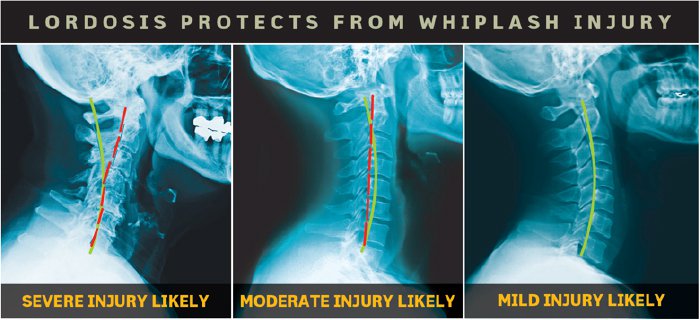“Concussion with primary impact to the chest and the potential role of neck tension.”
Journal of Open Sport and Exercise Medicine 2018
https://bmjopensem.bmj.com/content/4/1/e000362
Most papers in the past have focused on direct blows to the head when researching concussion. There have been a handful of papers that linked stretching of the soft tissue in the brainstem in the Craniocervical Junction (CCJ) to concussion. This paper studies impact to the chest and estimates the strain put on the CCJ. The CCJ or Upper Cervical Spine can be a major component of Concussion and why Post Concussion Syndrome (PCS) symptoms don’t seem to resolve. If you had a concussion over 30 days ago and are still experiencing concussion-like symptoms, that is what’s called PCS. This is a sign that the CCJ or upper cervical spine might be involved. Upper Cervical Chiropractors focus directly on analyzing and correcting the misalignment of the Atlas and Axis (or C1 and C2 vertebra) to bring proper fluid flow and nervous system balance, as well as structural balance back to the head, neck, and whole body. Gentle, vectored correction to the upper cervical spine might be the solution for what’s holding you back from health. Call an upper cervical specialist today to find out more.
In this study, impact testing was done to the chest of a helmeted and unhelmeted Anthropomorphic Testing Device (ATD), which is basically a test dummy. They also reconstructed two National Football League (NFL) collisions, which resulted in concussions of the players from live footage. Lastly, they tested a Finite Element (FE) model to estimate the stretching of the cervical spine under tensile and flexion loading conditions. They found that the helmeted ATD had a 40% increase in neck tensile force and an 8% increase in neck flexion angle compared to the unhelmeted ATD. From this data, the researchers concluded that strain in the upper cervical spine and the upper cervical spinal cord from neck tension is a factor in concussion. So, if you have been struggling with health problems like brain fog, fatigue, head pain, dizziness, and neck pain since a concussion incident; whether it was from a hit to the head, whiplash, or a hit to another part of the body, getting your Upper Cervical Spine assessed by an upper cervical specialist might be the next step to regaining your health. The Craniocervical Foundation partners with Arete Chiropractic in Portsmouth, New Hampshire, who are Upper Cervical specialists, to provide subsidized care to those in financial need, military veterans, or active duty military.
Call today at 802-441-5223 to find out more.







